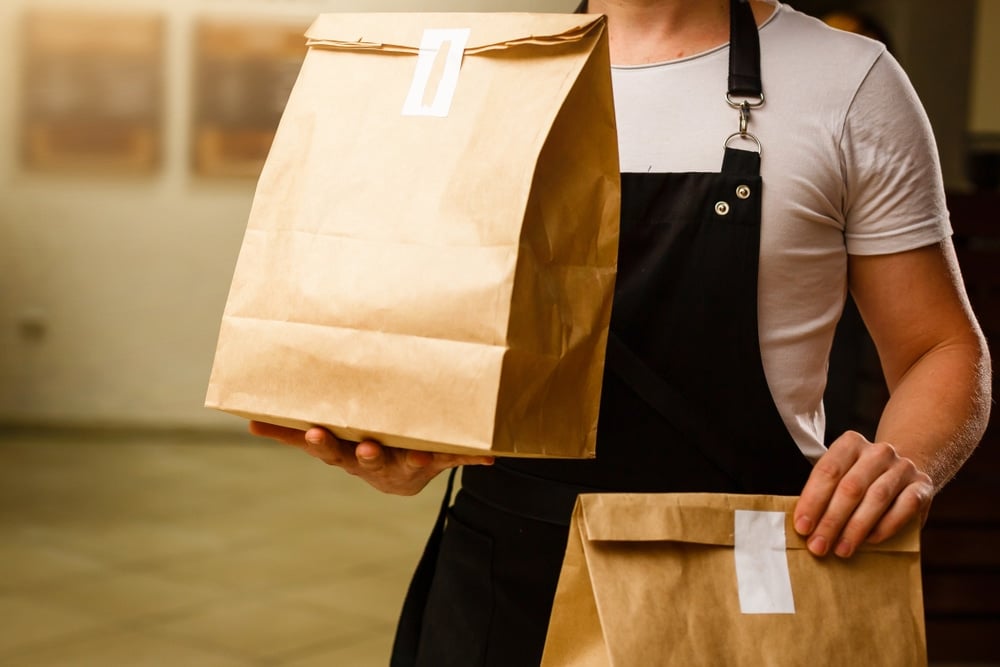With frequent and sometimes lengthy stay-at-home orders put in place during 2020 due to Covid-19 restrictions, dine-in restaurant experiences were largely limited across the board, and meal delivery became a major staple in how Americans put dinner on the table.
Since food delivery services have become an essential part of running a successful restaurant business, there are a couple of different options for presenting your menu offerings to your community. Factors such as the size and operational capabilities of your restaurant, whether you operate independently or are part of a larger franchise system, how far your guests are from your physical location, and other issues will influence your decision to opt for an in-house delivery system or use bigger, third-party delivery services.
Benefits for The Guest
Most third-party delivery services like Uber Eats, Seamless, GrubHub, and others operate similarly to one another. Through their own digital apps, they offer a searchable menu of a variety of local categories of cuisine and the restaurants that fall under those categories, depending on your location. If you’re in the mood for a burger and fries, you may simply search “burger” or “American” food and find that Wayback Burgers delivers in your area.
You place your order through the third-party app, which sends it to the restaurant via mobile device or through direct integration with the restaurant’s POS system. While the restaurant prepares your food, local delivery drivers are connected to fetch your order and bring it to your door.
The third-party delivery system benefits the guest and restaurant differently. For the guest, using a third party puts a veritable encyclopedia of food choices at their fingertips. Not sure what you’d like to eat for dinner tonight? Log in to any one of these services and find options ranging from Thai to Italian to sandwiches to sushi and much more. The whole process of choosing your food, placing your order, and receiving it requires little to no contact aside from opening your front door to retrieve your food.
Benefits for The Restaurant
Restaurants who opt to partner with third-party delivery services may enjoy a range of perks that could potentially increase business and streamline online ordering and delivery. Partnering with a third-party service will give you access to guests you might not have reached otherwise, particularly in the midst of a pandemic.
With quick and easy access to a wider variety of choices through their mobile devices, potential guests will inevitably come across more options than they may have considered previously. As a result, there is a higher likelihood that they will inadvertently find your restaurant, resulting in a higher probability of increasing orders and gaining new guests and loyal fans. Moreover, you won’t need to advertise delivery services because you will already be a part of larger platforms with a broad (and growing) audience.
Your fixed cost expenditures may be lower without an in-house delivery option. You won’t be required to spend extra money on insurance costs or wages for delivery staff, and you can reduce capital expenditures by not requiring branded delivery vehicles. Basically, your focus can remain on putting out delicious, quality food to be delivered from your kitchen to your guests’ homes.
Some Drawbacks to Third-Party
It should be noted that while in-house delivery methods may cost you money in some ways, third-party delivery isn’t free. Most platforms charge the restaurant a commission on each order, which typically falls between 15% and 30%.
Restaurants will have different methods in how they get their food out the door to folks. For instance, smaller, independent restaurants may find it more beneficial to use in-house delivery methods. Some restaurants, like Wayback Burgers, benefit from using both third-party and in-house delivery services.
Additionally, with third-party delivery, you lose control over your product from the second it leaves your restaurant. The drivers who deliver food from your restaurant don’t actually work for you, so you have no say in how they conduct themselves. This can negatively, perhaps unfairly, impact your business (and online reviews) if the guest service provided by third-party delivery personnel isn’t up to your standards. You may also experience communication issues which can lead to problems that affect the quality of your guests’ experience.
Get Creative
This year, in particular, restaurants are getting creative with food delivery options. Some restaurants opt for a middle-ground between in-house and third-party delivery options by teaming up with other nearby restaurants to pool resources and share a small network of delivery drivers. Other restaurants, like Wayback Burgers, are finding the combined use of a specialized mobile app plus curbside pickup to be an efficient way to serve guests while still maintaining our high standards without spending money on delivery. To learn more about how we’ve continued to serve comfort food to our guests when they need it most, visit waybackburgers.com/franchising.
Restaurants that incorporated a third-party delivery system have seen an increase in sales volume by 10-20%. There are promising options however you choose to get your food to your guests, and the possibilities are likely to further adapt and grow over the coming year.

